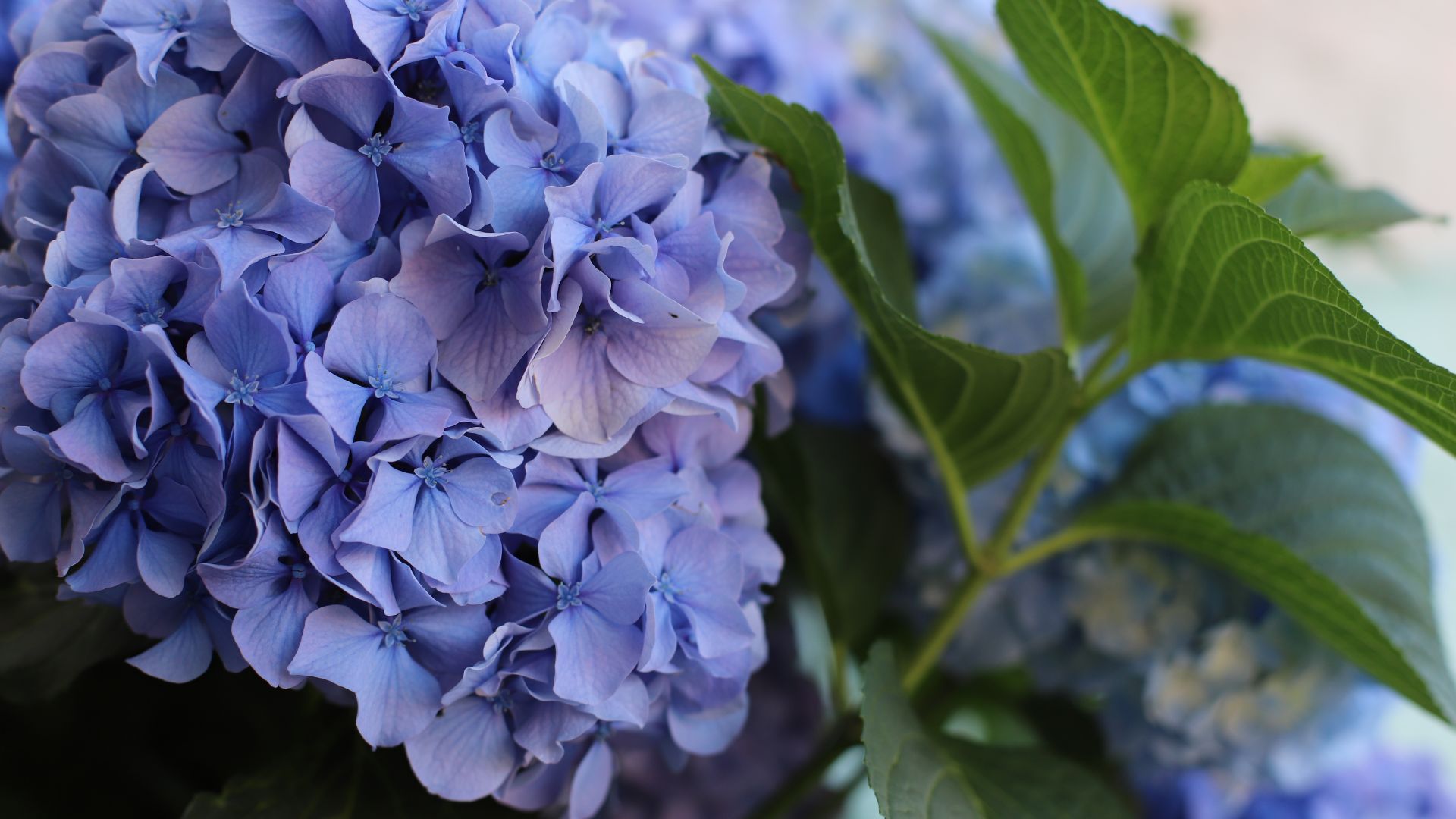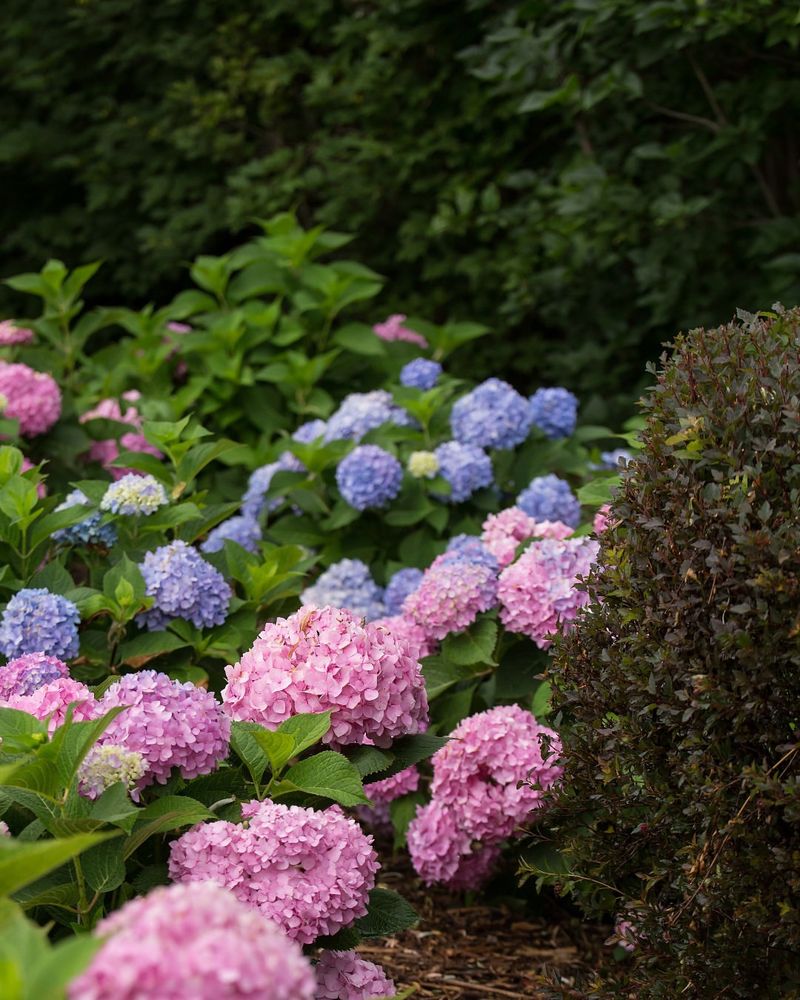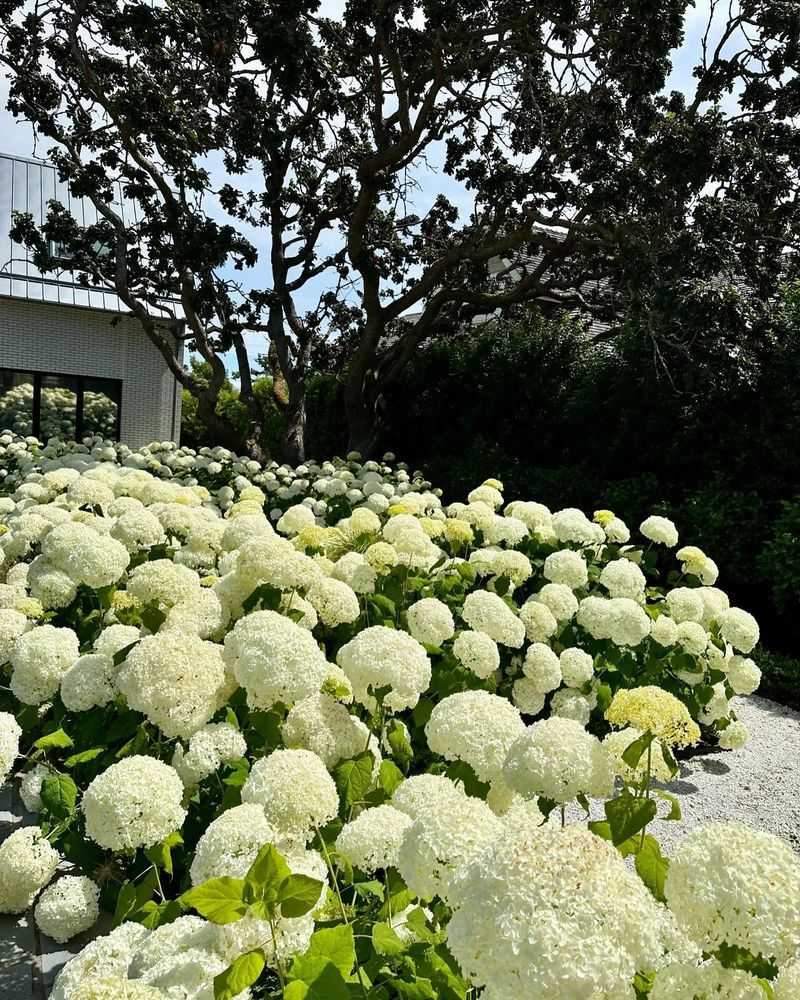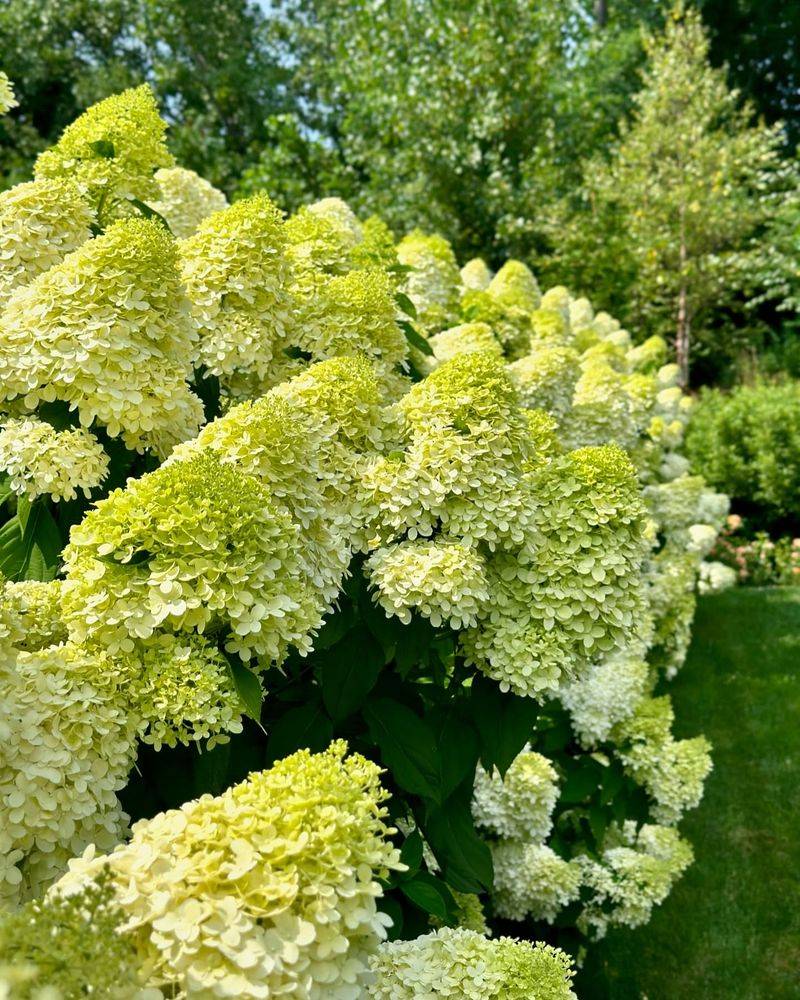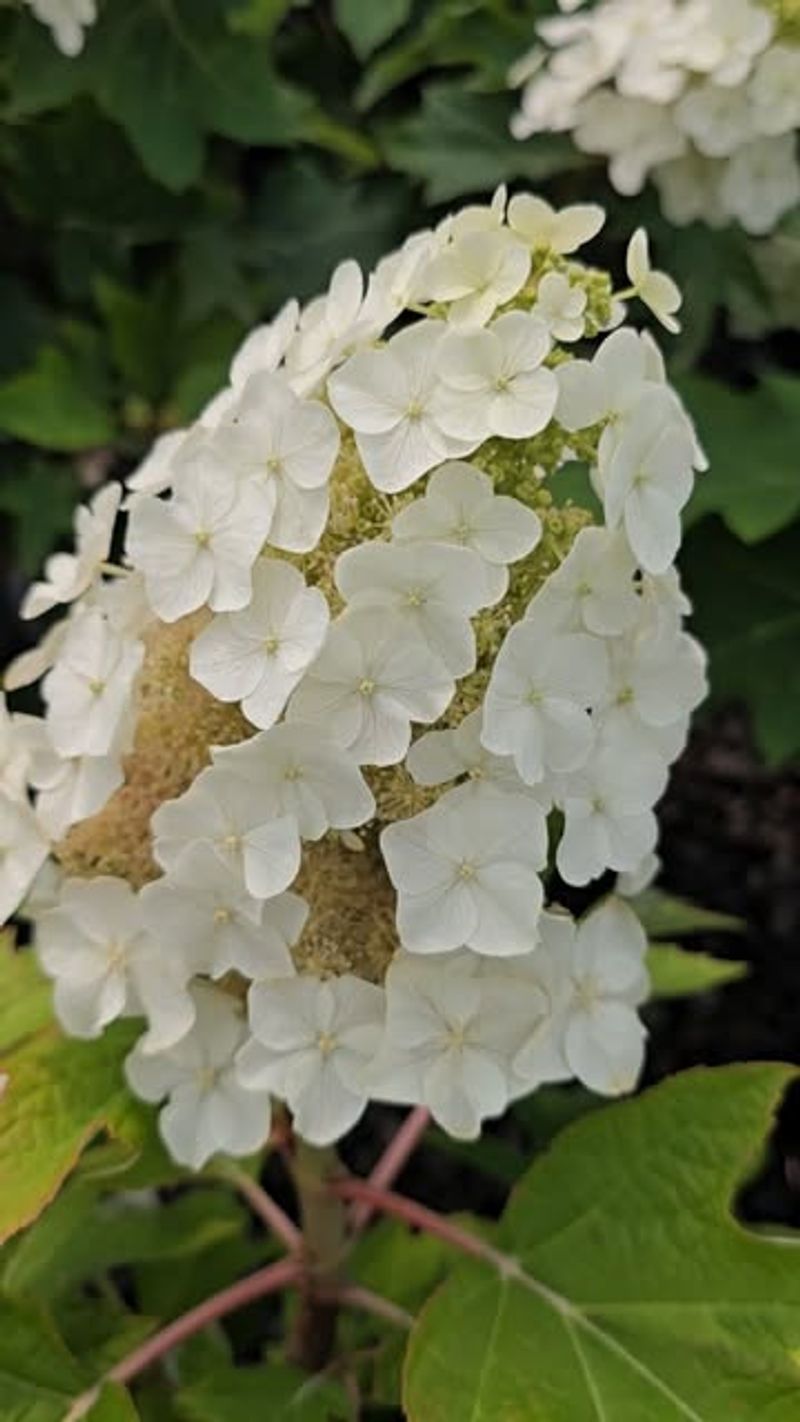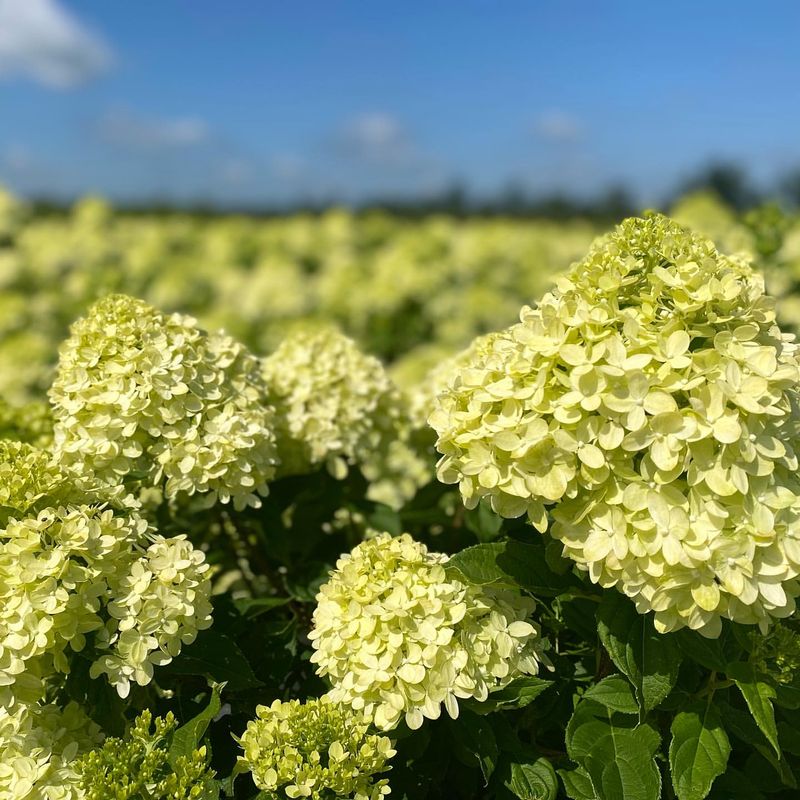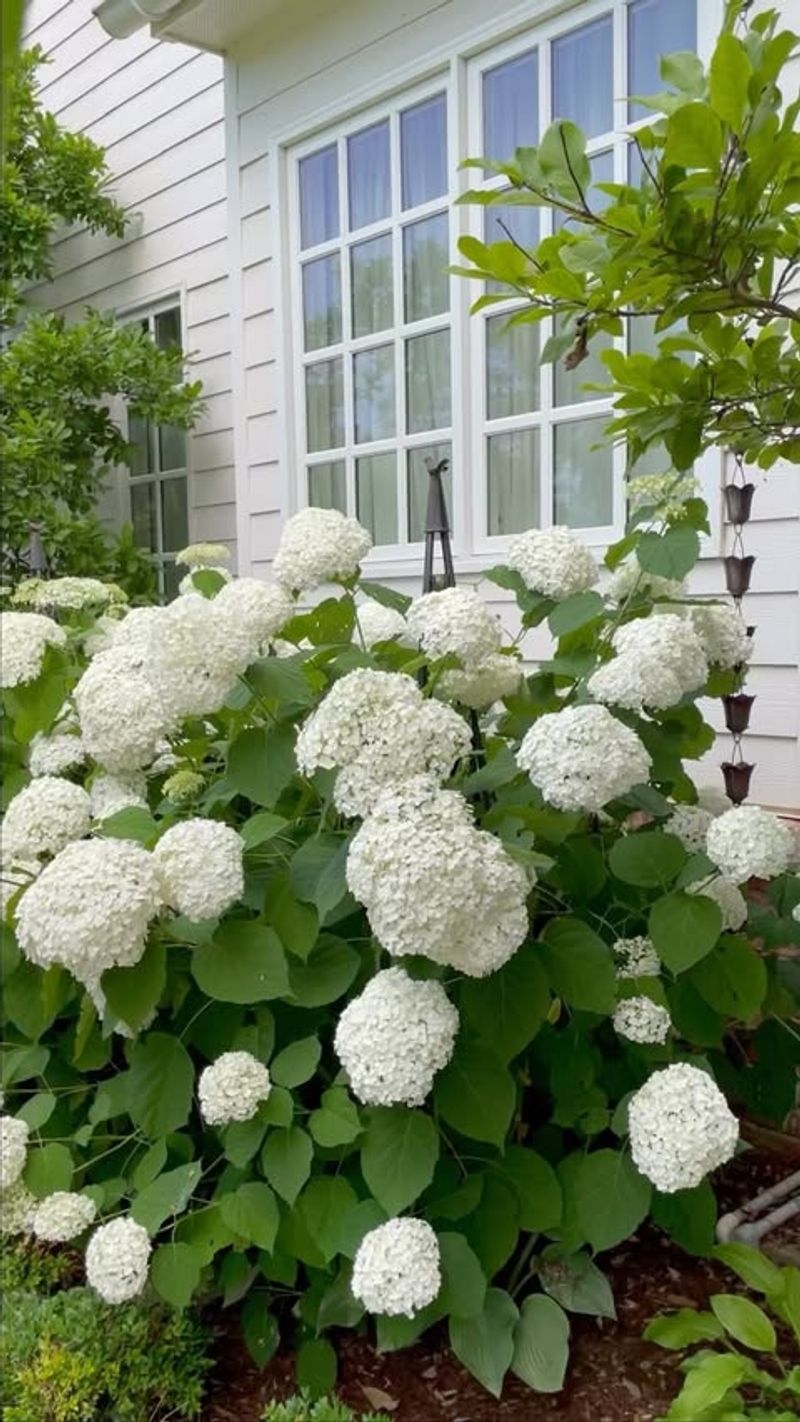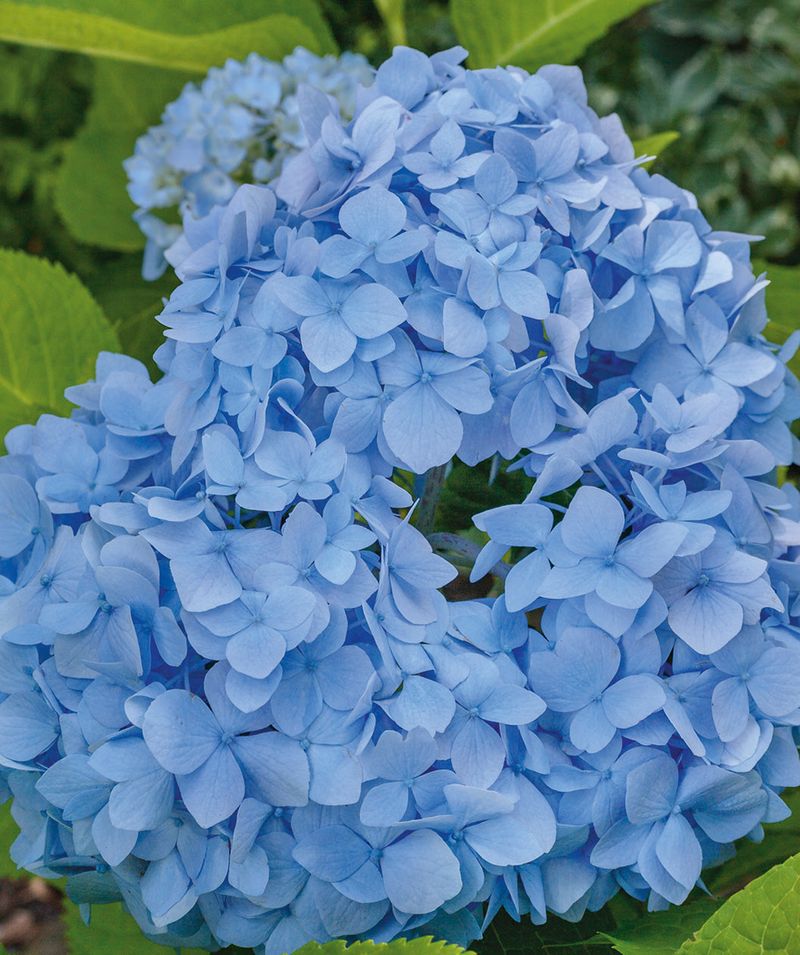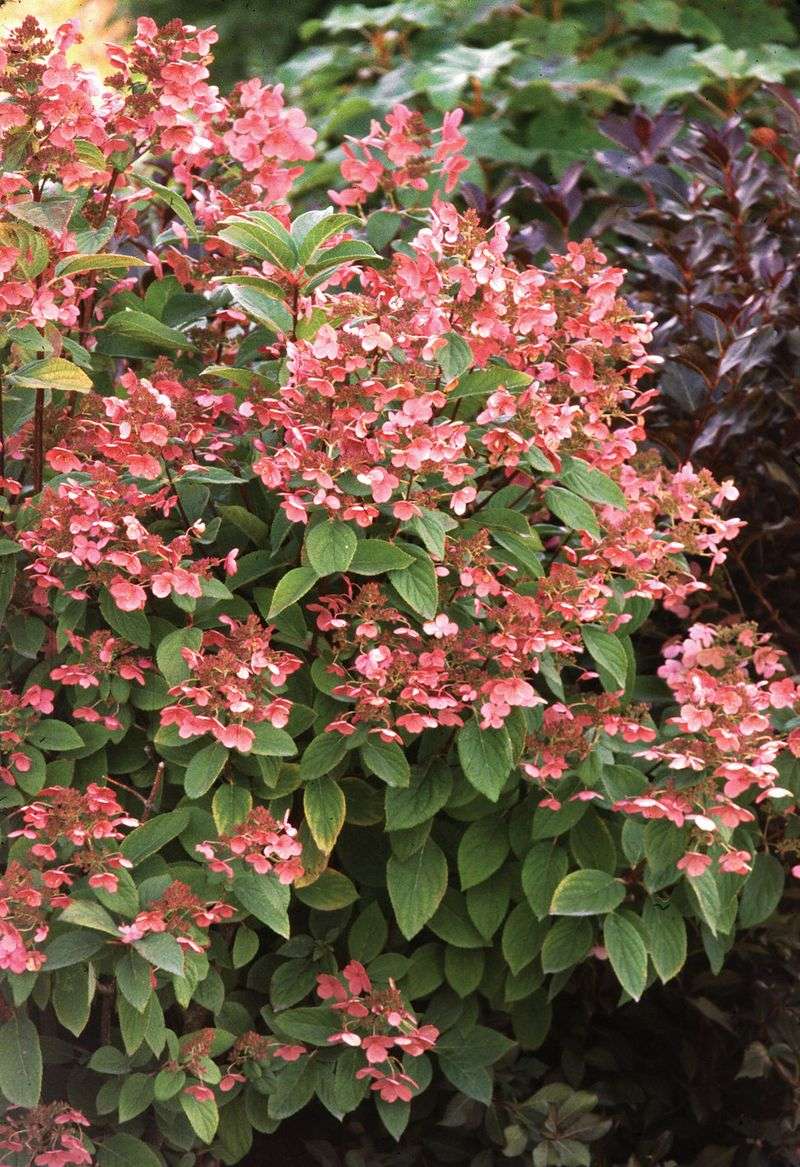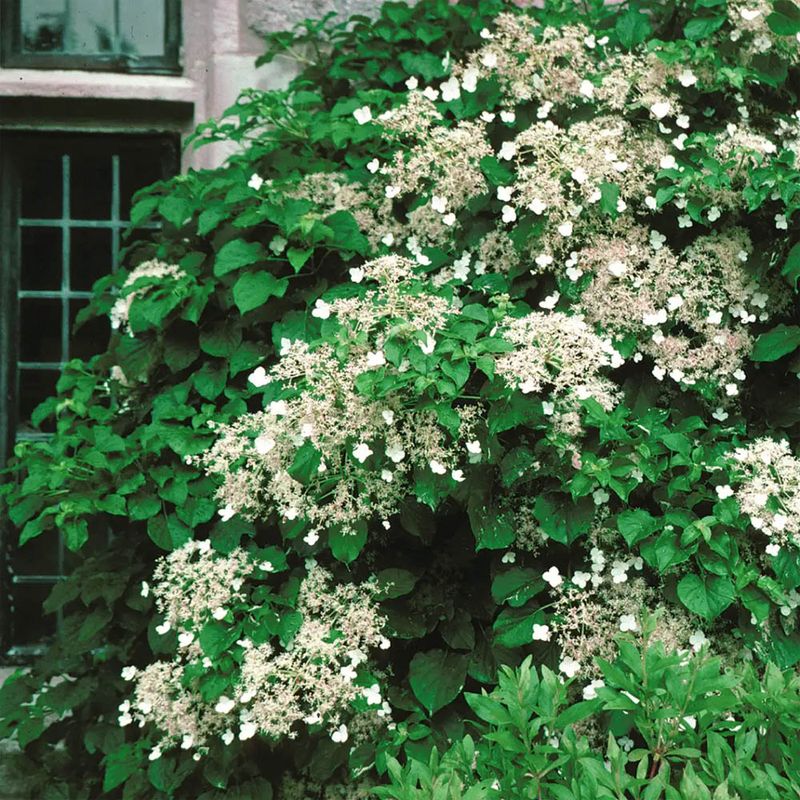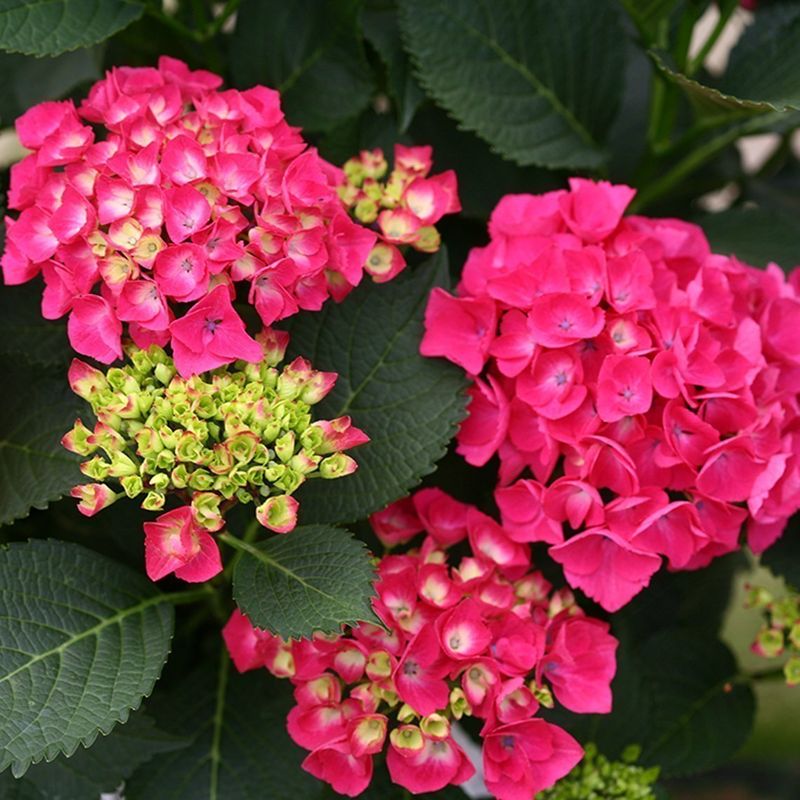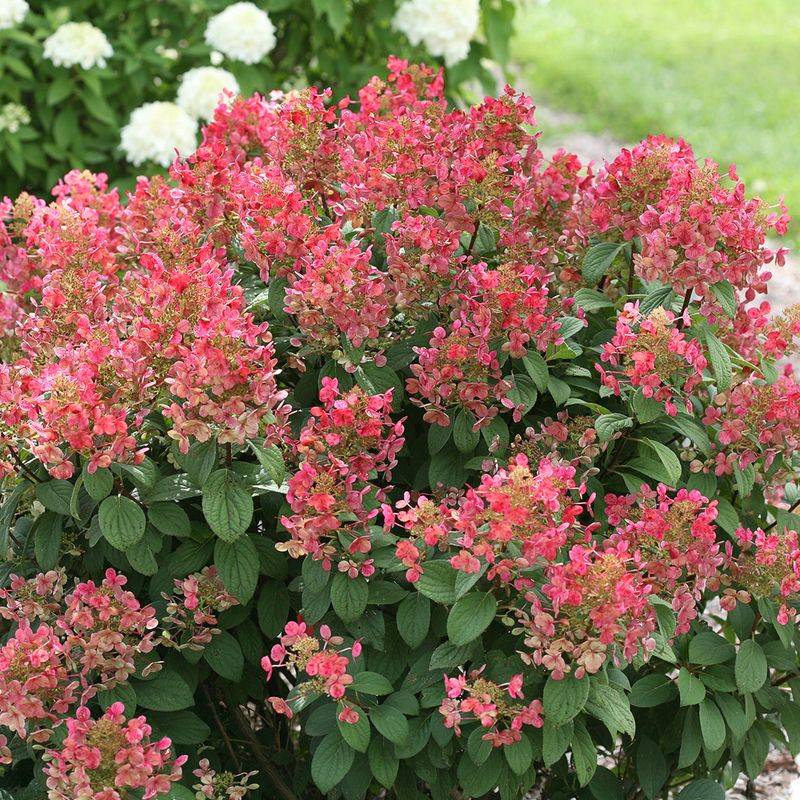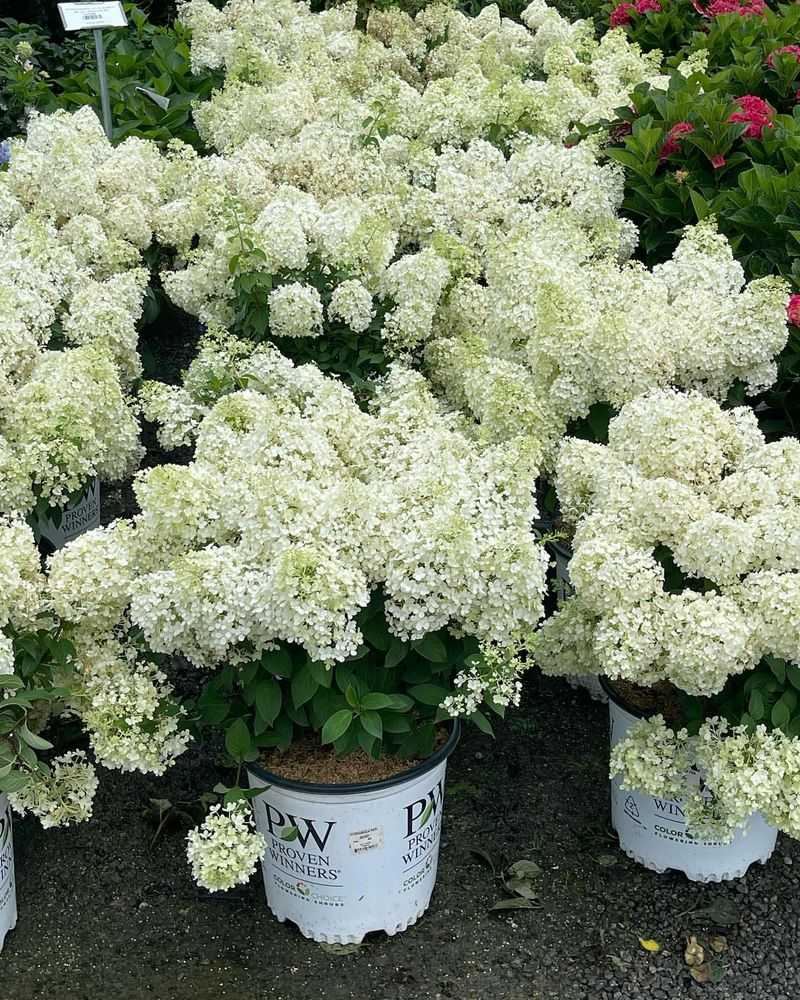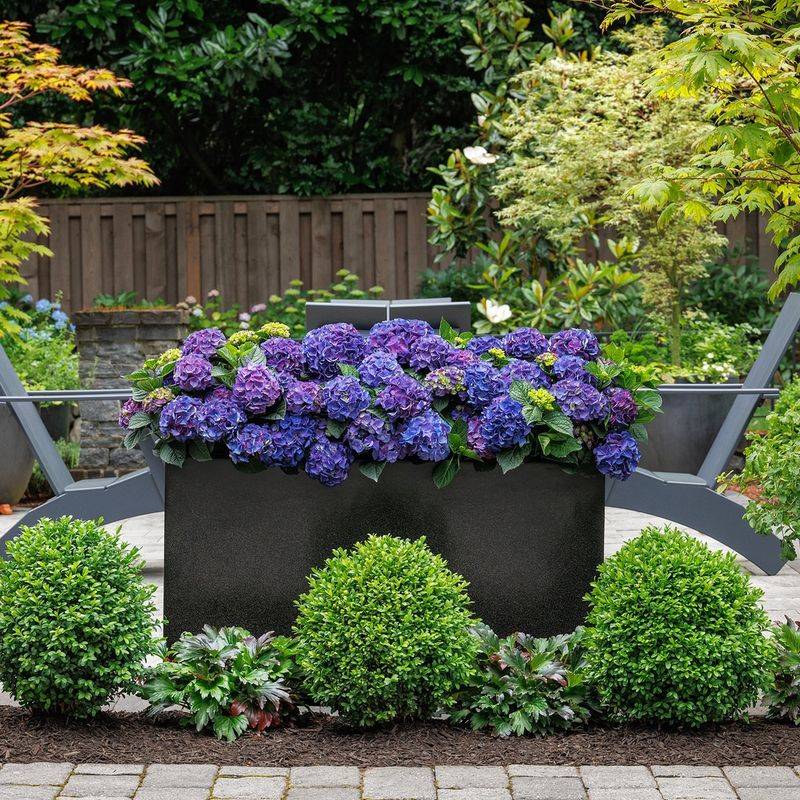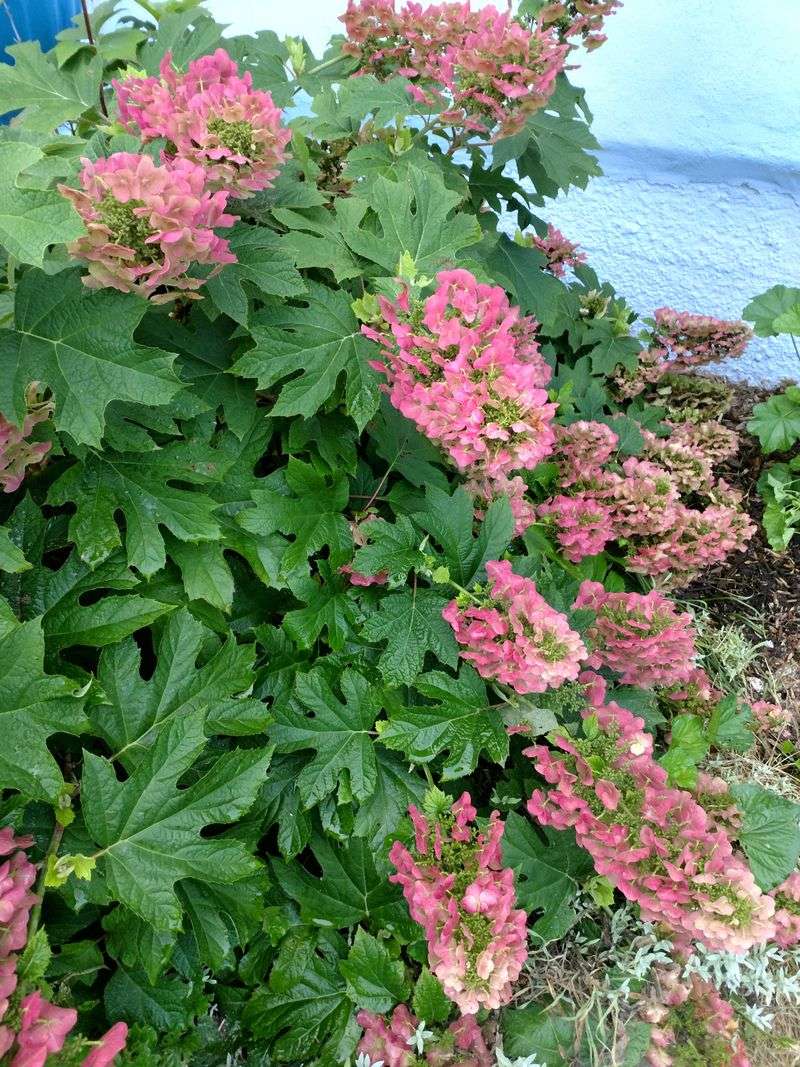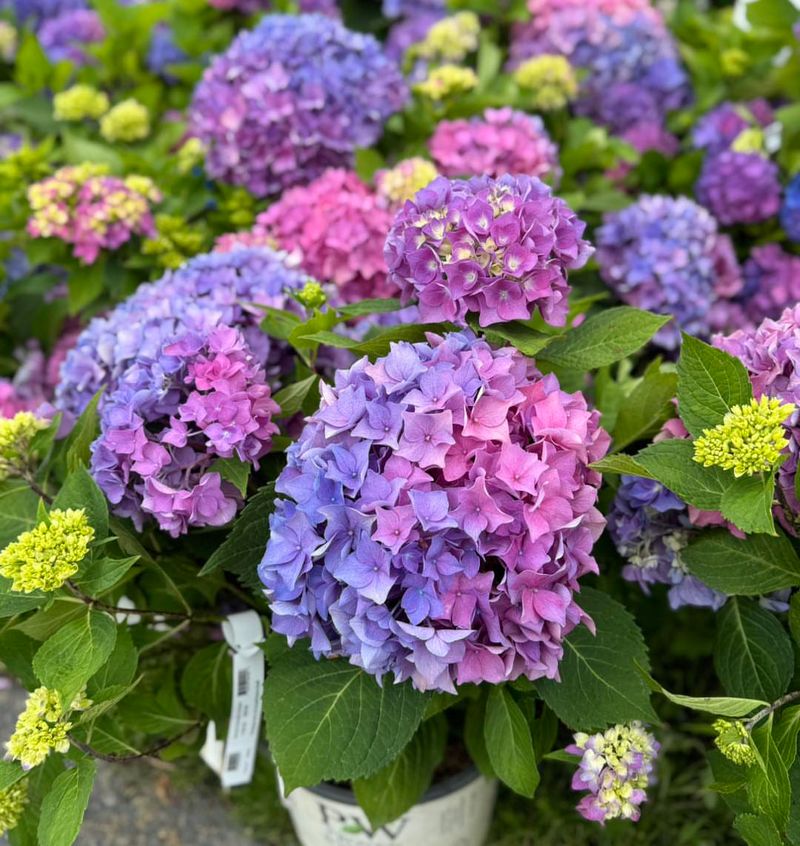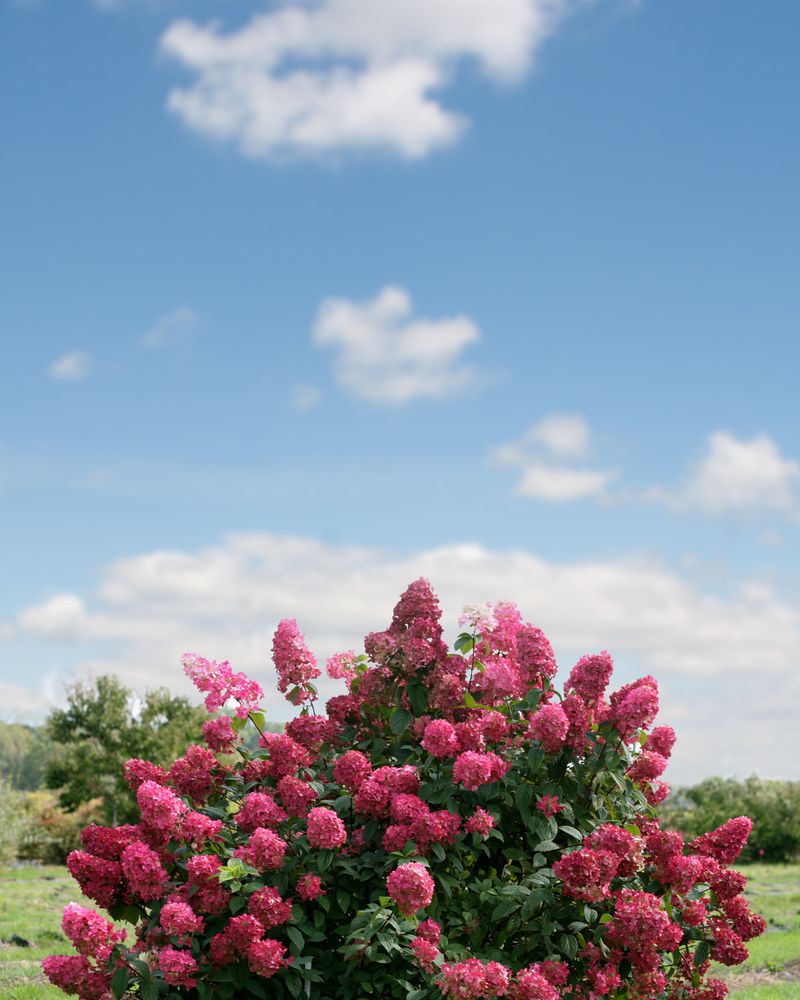Hydrangeas add instant charm with their bold blooms and graceful form—no wonder they’re a garden favorite. From sprawling borders to cozy corners, these versatile shrubs are surprisingly easy to fit into almost any outdoor space.
With varieties that handle shade, drought, or tight spots, there’s a hydrangea for nearly every condition. Bigleaf types bring drama to moist, shaded areas, while panicle hydrangeas flourish in sunnier, drier spots.
Whether you’re starting small or dreaming big, these blooms adjust beautifully to your yard’s personality. Pick the right match and you’ll have color, texture, and curb appeal that lasts all season.
1. Endless Summer
Blooms on both old and new wood, making it a reliable performer even after harsh winters or accidental pruning. I’ve found this variety particularly forgiving for beginners.
Produces blue flowers in acidic soil and pink blooms in alkaline conditions. You can actually change the color by adjusting your soil pH—a fun garden experiment that always impresses visitors.
Grows well in partial shade to full sun and reaches about 4 feet tall and wide. Perfect for foundation plantings where you want something that won’t outgrow its space.
2. Annabelle
Famous for massive white snowball blooms that can reach 12 inches across. These impressive flowers start green, mature to pure white, and then age to a lovely pale green again.
Thrives in shadier spots where many flowering shrubs struggle. My north-facing foundation bed comes alive with these beauties when little else provides summer color.
Extremely cold-hardy down to zone 3, making it perfect for northern gardens. Even after being completely cut back, it rebounds with full blooms the next season.
3. Limelight
Stands out with cone-shaped flowers that emerge lime green before transitioning to white and finally blushing pink in fall. The color progression creates months of changing interest.
Handles full sun better than most hydrangeas, even in hotter climates. Unlike many varieties that wilt midday, Limelight stays perky through summer heat waves.
Grows quite tall at 6-8 feet, making it excellent for back borders or as a flowering hedge. The strong stems rarely flop, even when loaded with heavy blooms.
4. Oakleaf
Features distinctive lobed leaves resembling oak trees that turn brilliant burgundy and purple in fall. Even without flowers, this native shrub provides multi-season interest.
Produces elegant cone-shaped white blooms that age to pink and persist well into winter. The dried flower heads look stunning with frost or snow dusting them.
Tolerates drier conditions once established, unlike most moisture-loving hydrangeas. I’ve seen it thrive in woodland edges where other hydrangeas quickly wilt from lack of water.
5. Little Lime
Offers all the charm of Limelight in a compact 3-5 foot package. The smaller size fits perfectly in urban gardens or anywhere space is limited.
Produces an abundance of green-to-pink panicle flowers that are perfectly proportioned to the shrub’s size. Each bloom is substantial enough to make an impact but won’t weigh down the branches.
Requires minimal maintenance beyond occasional pruning in late winter. Mine thrives in a container on my patio, proving its versatility for small-space gardening.
6. Incrediball
Developed as an improved Annabelle with stronger stems that prevent flopping, even after rain. The sturdier structure keeps those massive blooms proudly upright all season.
Produces truly enormous white flower heads up to 12 inches in diameter. When several bloom at once, they create a spectacular display that dominates the garden landscape.
Recovers quickly from stress, whether from drought, cold, or improper pruning. Last year’s late freeze damaged many plants in my garden, but Incrediball bounced back with full blooms in just weeks.
7. Nikko Blue
Delivers the classic blue hydrangea color that many gardeners crave. The rich azure blooms create a cooling visual effect, especially welcome during hot summer months.
Prefers morning sun and afternoon shade, making it ideal for east-facing locations. Against the brick wall of my garden, it receives exactly this light pattern and rewards with reliable flowering.
Needs acidic soil to maintain its signature blue color. Adding coffee grounds or acidic fertilizers helps intensify the blue tones if your natural soil tends toward neutral or alkaline.
8. Quick Fire
Blooms earlier than other panicle hydrangeas, often by a month or more. This head start extends your hydrangea season and provides flowers when the garden might otherwise look sparse.
Changes color dramatically throughout the season from white to deep pink-red. The color intensifies as temperatures cool in fall, creating a stunning late-season display.
Adapts to various soil conditions, including clay, as long as drainage is adequate. After struggling with several hydrangeas in my heavy soil, Quick Fire was the first to establish without amendment.
9. Climbing Hydrangea
Solves the problem of shady walls and fences that need vertical interest. Unlike most vines that demand sun, this one thrives in north and east-facing locations.
Clings to surfaces with aerial rootlets, requiring no trellis or support system. Once established on my garden shed, it created a self-supporting living wall of green and white.
Produces lacy white flower clusters against rich green foliage. Patient gardeners are rewarded—while slow to establish, it becomes a spectacular mature specimen that can live for decades.
10. Cityline Paris
Maintains a naturally compact size of just 1-3 feet tall and wide. This petite stature makes it perfect for containers, small gardens, or front-of-border positions.
Produces vibrant fuchsia-red blooms that hold their color regardless of soil pH. Unlike blue varieties that need specific soil conditions, this one delivers consistent color with minimal fuss.
Resists mildew better than many mophead types, keeping foliage attractive all season. In my humid climate where many hydrangeas develop spotty leaves by August, Cityline Paris stays clean and fresh.
11. Little Quick Fire
Fits into tight spaces at just 3-4 feet tall while delivering the same early blooms as its larger cousin. The smaller footprint works beautifully in urban gardens where every square foot counts.
Transitions from white to rusty-red flowers, creating weeks of changing garden interest. The red tones intensify with cool nights, making fall displays particularly striking.
Handles tough conditions including poor soil and partial shade. After trying several varieties in a challenging spot along my driveway, this adaptable performer finally solved the problem.
12. Bobo
Reaches just 2-3 feet tall but becomes completely covered in white blooms. The flower-to-foliage ratio is impressive, creating the appearance of a floral mound rather than a leafy shrub.
Holds flowers upright on strong stems despite their abundance. Even heavy summer downpours don’t leave this little powerhouse looking bedraggled or bent.
Works beautifully in mass plantings for low hedges or borders. A row of five along my garden path creates a stunning summer display that draws compliments from every visitor.
13. Seaside Serenade Bar Harbor
Delivers big blue blooms on a compact 3-4 foot frame. The large flowers create visual impact while the restrained size fits into today’s smaller gardens.
Features thicker, waxier leaves that resist wilting even during hot afternoons. This improved leaf structure means less babying during summer heat waves—a real advantage in my southern garden.
Reblooms throughout the season without deadheading. Unlike older varieties that flower once and stop, this newer introduction keeps producing fresh blooms from summer into fall.
14. Ruby Slippers
Combines the beautiful foliage of oakleaf types with a more manageable 3-4 foot size. The compact nature makes it suitable for mixed borders where traditional oakleafs would overwhelm companions.
Produces white flowers that quickly turn pale pink and then deepen to ruby red. The color transformation happens faster than with many hydrangeas, creating dramatic changes within weeks.
Tolerates heavier shade than most hydrangeas while still flowering abundantly. In the dappled light beneath my maple tree, it’s one of the few shrubs that reliably produces colorful blooms.
15. Let’s Dance Rhythmic Blue
Reblooms reliably on both old and new wood, ensuring flowers even after harsh winters or late pruning. This extended blooming season provides color from early summer through fall frost.
Shifts between blue and purple tones depending on soil conditions. The chameleon-like color changes create an ever-evolving display that keeps the garden interesting throughout the season.
Maintains a moderate 2-3 foot size that fits into modern landscapes. Its restrained growth means you won’t need to prune constantly to keep it in bounds—a time-saver for busy gardeners.
16. Fire Light
Produces upright panicles that start pure white and gradually transform to rich pomegranate red. The color change happens slowly, creating weeks of evolving interest as summer transitions to fall.
Maintains exceptionally strong stems that never flop, even when loaded with massive blooms. After storms that leave other hydrangeas bent to the ground, Fire Light stands tall without staking.
Tolerates full sun in northern regions, making it ideal for open garden areas. Mine thrives in a spot that receives 8+ hours of sun daily—a position where many hydrangeas would crisp and wither.

